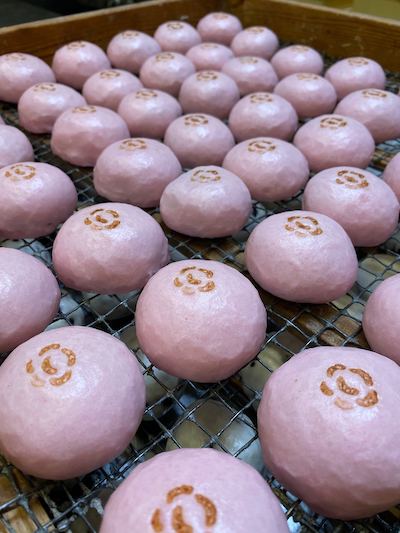
What is Mochi?
Mochi is a Japanese confection, found usually in the shape of a small, round rice cake which can be eaten with condiments such as kinako (roastedsoy bean flour), manju (sweet red bean paste), soy sauce dip, and seaweed. Traditionally, mochi is made by pounding steamed glutinous rice in a large wooden mortar, called the usu, with a wooden mallet called the kine. Mochi-tsuki is the Japanese term for the old-style method of pounding the steamed glutinous rice used to make mochi.





